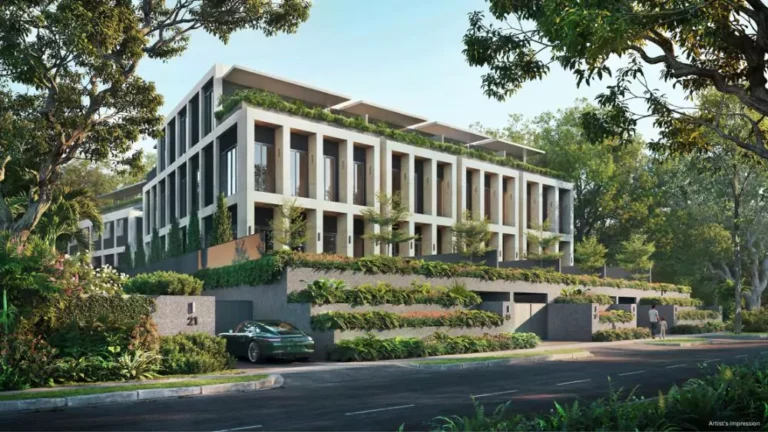News roundup: Philippines sees up to USD6 billion in casino investments, other headlines

For PropertyGuru’s news roundup, the Philippines expects up to USD6 billion in casino investments from foreign and domestic firms. In other headlines, Cathay Pacific was ill-equipped to predict its manpower shortage, and a deep dive into temporary architecture and informal urbanism with India’s public marketplaces and roadside bazaars.
The Philippines sees up to USD6 billion of investments in casinos
Foreign and domestic firms are expected to invest much as USD6 billion in the Philippines’ casino sector in the next five years, the head of its gaming regulator said, bolstering its status among Asia’s top gambling destinations as competition increases.
According to Bangkok Post, the Philippine Amusement and Gaming Corp Chairman Alejandro Tengco said that at least one new casino-resort will open every other year including in areas outside Manila like Clark, a former United States military base north of the capital, and Cebu in the country’s central region.
Tengco said the Philippines would likely hit its target of PHP450 to 500 billion (USD8 to 9 billion) in total gross gaming revenue (GGR) by 2027, a year earlier than expected.
Cathay Pacific lacked ‘experience and digital capability’ to predict manpower crunch, Hong Kong gov’t says
Hong Kong’s flagship carrier Cathay Pacific lacked the experience and digital capability to predict a manpower shortage, the Civil Aviation Department (CAD) has found, after the flagship carrier cancelled more than 780 flights from December to February.
Cathay attributed the cancellations over the peak travel period to an “unanticipated and sustained increase in pilot sickness, most likely caused by a peak in seasonal influenza,” according to the airline’s report submitted to the department.
The carrier said it had conducted projections to ensure that it had enough pilots for the rest of the 2024 schedule, and had also assembled a task force to review its organisational structure with the aim of improving operations.
HKFP reported that the CAD, in a paper submitted to the Legislative Council on Monday, called Cathay’s crew planning process “ineffective” upon examination of the airline’s report, adding that it “lacked the experience and digital capability to forecast crew resources sufficiently.”
Temporary architecture in India: Marketplaces and bazaars
India’s urbanscapes are characterized by a negotiation between the formal and the informal; permanence and impermanence. Structured amidst the concrete high-rises and planned neighborhoods, makeshift markets and bazaars form the core of city life. Often composed of sustainable structures, these transient commercial hubs exhibit a form of rudimentary architecture that spreads its roots deep in India’s cultural and economic traditions.
The heart of India’s informal urbanism lies in its public marketplaces and roadside bazaars that have existed for centuries. These urban zones have a history, believed to have originated from the era of traveling merchants and imperial trade relations. Today, these environments have evolved into dense labyrinths of impermanent shelters made from recycled tin sheets, tarpaulin canopies, and wooden poles. These bazaars organically transform neighborhoods into a choreographed chaos of vendors, goods, and the common public. Weekly markets are usually massive in scale and are set up every few days only to disappear again.
The makeshift nature of these bazaars allows for excellent flexibility to cater to the ever-changing needs of communities. Stalls manifest and morph based on seasonal produce, migratory trades, or recurring festivals. The temporal boundaries are dictated not by rigid planning but by an intuitive interaction between capitalism and culture. This organic urban morphology is similar to a pop-up city like the Kumbh Mela that appears and dissolves in sync with the cultural festivities of India.
According to ArchDaily, any envisioning of urbanization and development goals must acknowledge and provide for the time-honored traditions of ephemeral placemaking.
The Property Report editors wrote this article. For more information, email: [email protected].
Recommended
Meet the expert helping overseas investors crack Australia’s property market
Ivan Lam of property advisors Charter Keck Cramer helps clients navigate Australia’s complex real estate dynamics
ARES White Paper Volume 3: The era of adaptive reinvention
Pioneering sustainable and innovative practices in urban development
ARES White Paper Volume 2: Unravelling the power of data revolution in real estate
Insights on proptech, smart cities, and sustainable development
ARES Digital White Paper Volume 1: The fundamentals of responsible building
Green and climate heroes join forces to discuss how Asia Pacific can weather the current environmental crises and the looming effects of climate change






